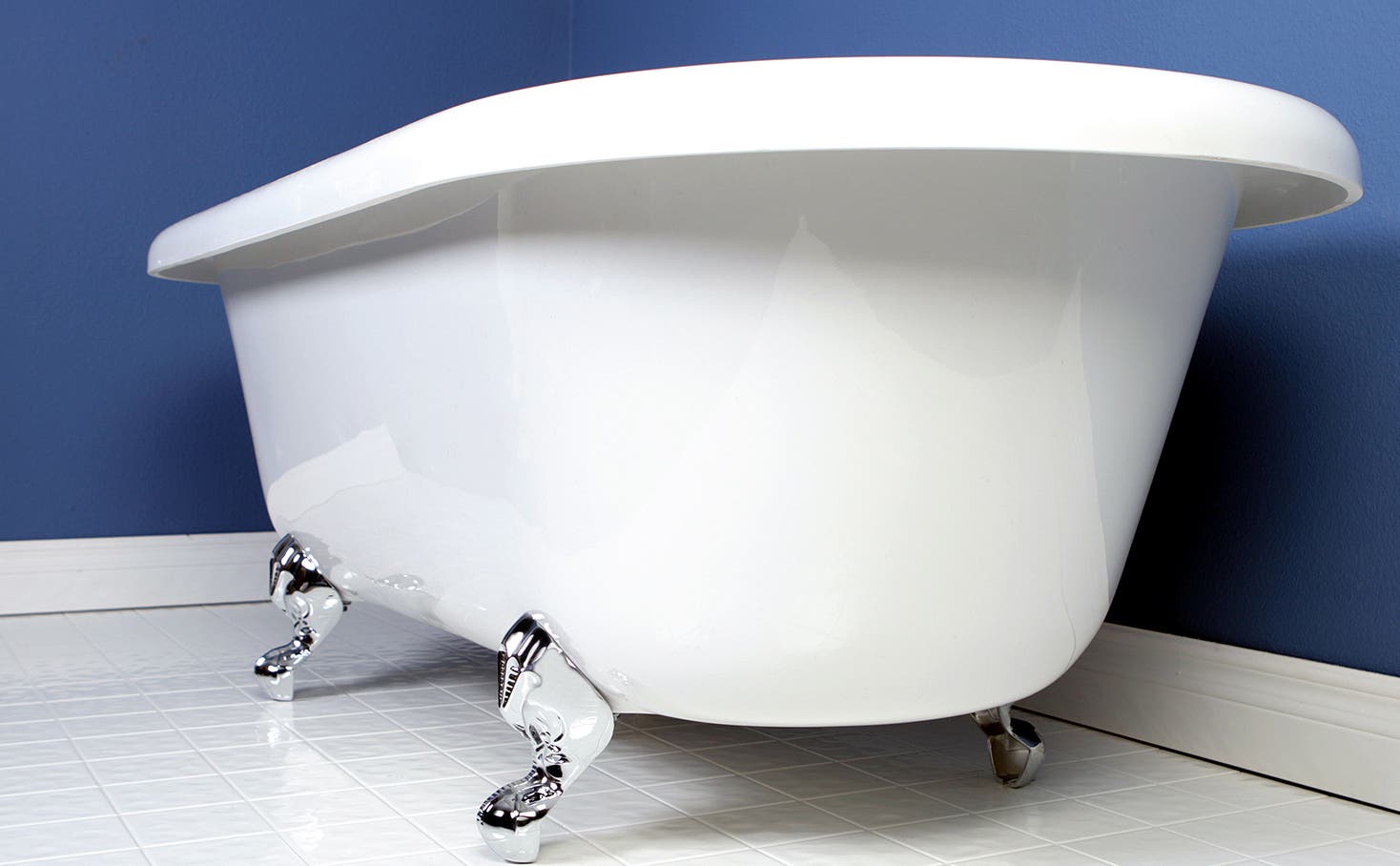Get PRO Pricing
Get [PRO] Pricing

Clawfoot tubs are a hot item in the interior design world. They are the go-to choice for people seeking to add a vintage vibe to their bathroom. The tub is pretty straightforward in its design. It has a roll top edge to allow the user to enter and exit the bath easily. Also, the iconic claw feet symbolize the ornate styles of the Victorian era. But when it comes to deciphering all the terms of clawfoot tub fixtures, it can be hard to sift through the various descriptors. Here is a guide to help you learn the differences between each option and get you closer to installing a new vintage tub in your home:
Mounting
There are four main ways to mount clawfoot tubs. However, the ultimate decision is based on preference and space constraints (if applicable).
Wall – Just like a standard built-in bathtub, you can have your antique bath fixtures installed directly into the wall. This is a great option for those that want to house their tub in the same place as their previous unit. With this option, the vintage bathtub will have to sit close to the wall so the faucet reaches the basin.
Inside tub – Vintage faucets can also be installed directly inside the tub. This option would require holes to be drilled in the unit to allow water to enter the bathtub.
Deck – This type of mounted faucet adds the fixture directly to the deck of the unit. This choice allows the beauty of the vintage faucet to be showcased and complement the clawfoot tub.
Freestanding – If you have seen clawfoot tubs with exposed plumbing, you have come across one with freestanding fixtures. This style is perfect for rustic vintage bathrooms, where the piping is considered an extension of the design.
Terms
Shrouds – If you choose a bath mount or deck mounted tap, you might need a shroud to cover your piping. Plumbing will be exposed toward the back of the unit. If that is not an issue and you enjoy that aesthetic, then there is no need to install shrouds. But, if you prefer to have a tub that has all the piping hidden away, then you can install these brass covers that affix directly into tap holes.
Standpipes – Just as they sound, standpipes serve as bases or structures to hold your vintage faucets in place. Inside these pipes are the necessary plumbing tubes to feed water into your bath. Standpipes are installed adjacent to the unit on the side or either end. They are secured to the floor for a sturdy construction.
Shallow trap – A trap refers to the waste area near the drain of the tub. Shallow models are installed for low-sitting tubs. So if you choose smaller claw feet, you may need to consider a shallow trap. Consult your contractor before you buy equipment to ensure you are purchasing the correct materials.
Exposed waste – This pipe is a feature on freestanding mounted fixtures. It is a tube that collects waste from the inside of the tub.
